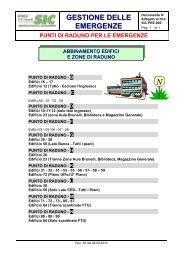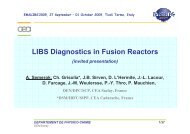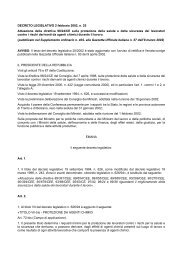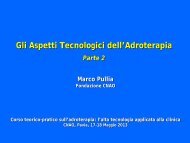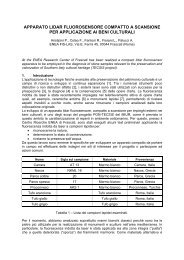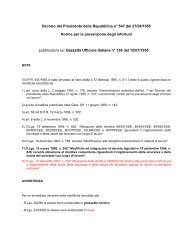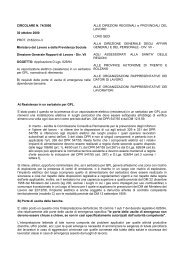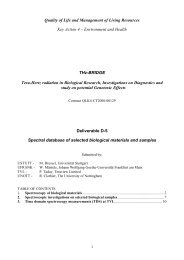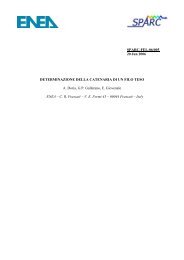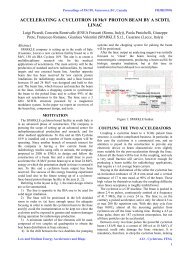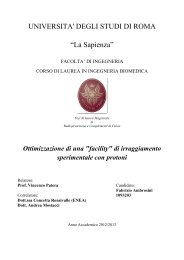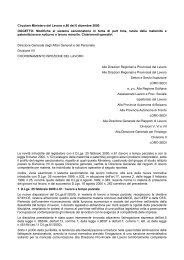Theory, Design and Tests on a Prototype Module of a Compact ...
Theory, Design and Tests on a Prototype Module of a Compact ...
Theory, Design and Tests on a Prototype Module of a Compact ...
You also want an ePaper? Increase the reach of your titles
YUMPU automatically turns print PDFs into web optimized ePapers that Google loves.
3. RF MEASUREMENT ON COUPLED CAVITIES 75<br />
Δ f [MHz]<br />
0<br />
−2<br />
−4<br />
−6<br />
−8<br />
−10<br />
−12<br />
0 2 4 6 8 10<br />
[half turns]<br />
Figure 5.5. The change in frequency due to a metallic<br />
plunger for the measurement <strong>of</strong> r over Q.<br />
the calculati<strong>on</strong> it is <strong>on</strong>ly necessary to use known relative steps advancement<br />
for the plunger, rather than exact measurement <strong>of</strong> how much the<br />
plunger penetrates into the cavity.<br />
C<strong>on</strong>sider, for example, the figure 5.5. It shows the typical change<br />
in frequency due to a 2.3 mm diameter cylindrical plunger which penetrates,<br />
through a c<strong>on</strong>ductor plane, an half pill-box like cavity with a<br />
res<strong>on</strong>ant frequency <strong>of</strong> 3.0359 GHz. The plunger is moved through a<br />
series <strong>of</strong> positi<strong>on</strong>s at which the changes <strong>of</strong> res<strong>on</strong>ant frequency are measured.<br />
The slope is determined from a numerical interpolati<strong>on</strong> <strong>of</strong> the<br />
curve.<br />
3. RF Measurement <strong>on</strong> coupled cavities<br />
From the electromagnetic theory it is known that two or more res<strong>on</strong>ators<br />
coupled together lose their single res<strong>on</strong>ant frequencies <str<strong>on</strong>g>and</str<strong>on</strong>g> meet<br />
in a number <strong>of</strong> modes equal to the number <strong>of</strong> res<strong>on</strong>ators [17]; those frequencies<br />
mainly depend from the single res<strong>on</strong>ant frequencies <str<strong>on</strong>g>and</str<strong>on</strong>g> from<br />
the coupling between the res<strong>on</strong>ators. In few words, the res<strong>on</strong>ant modes<br />
<strong>of</strong> the coupled cavities corresp<strong>on</strong>d to all the possible ways to satisfy<br />
the new boundary c<strong>on</strong>diti<strong>on</strong>.<br />
From the single cavity point <strong>of</strong> view, also the own res<strong>on</strong>ant frequency<br />
is modified from the coupling mechanism. For example, an<br />
aperture between two cavities in a z<strong>on</strong>e where the magnetic field is<br />
str<strong>on</strong>g changes the stored magnetic energy <strong>of</strong> the cavities <str<strong>on</strong>g>and</str<strong>on</strong>g>, as a<br />
c<strong>on</strong>sequence, the single res<strong>on</strong>ant frequencies.



